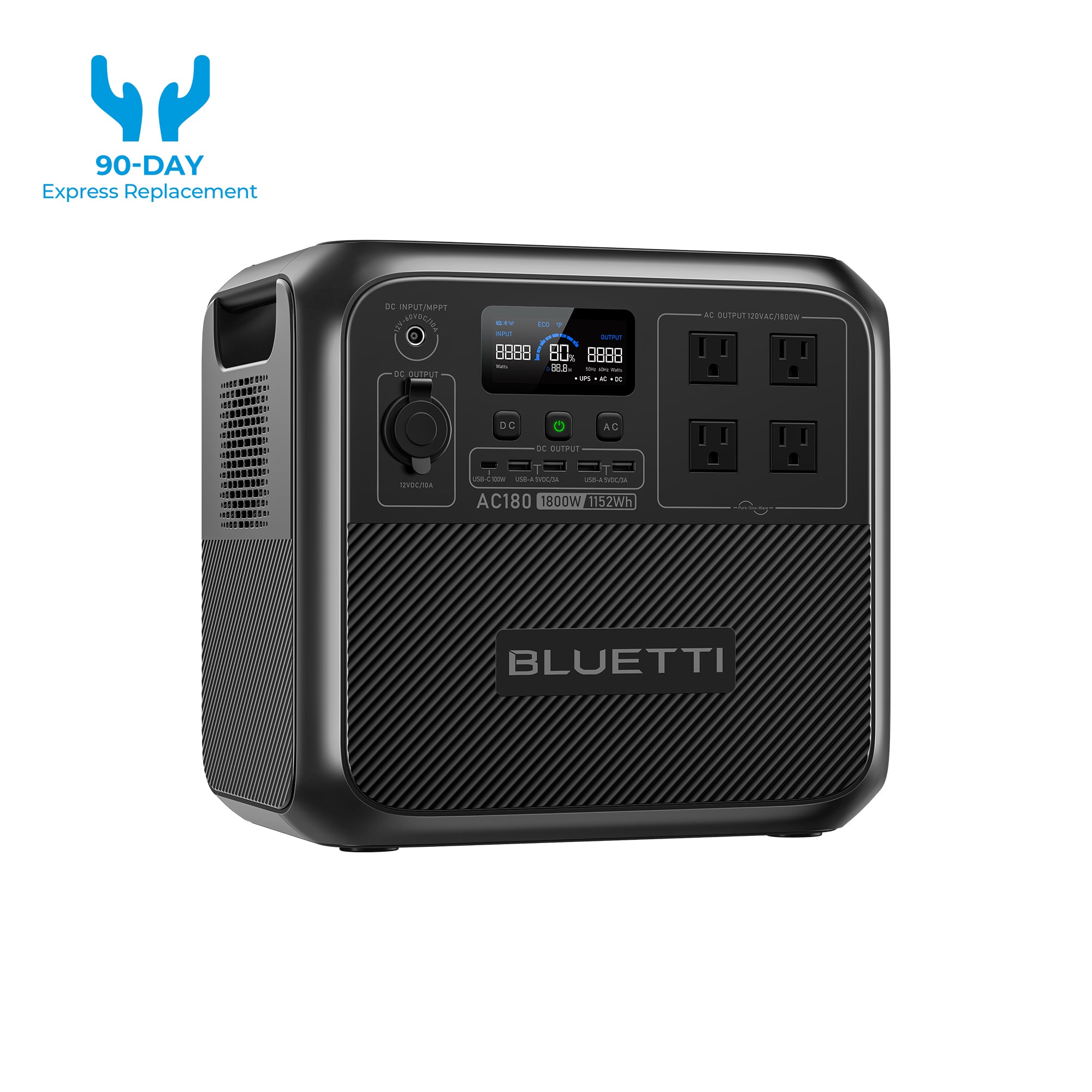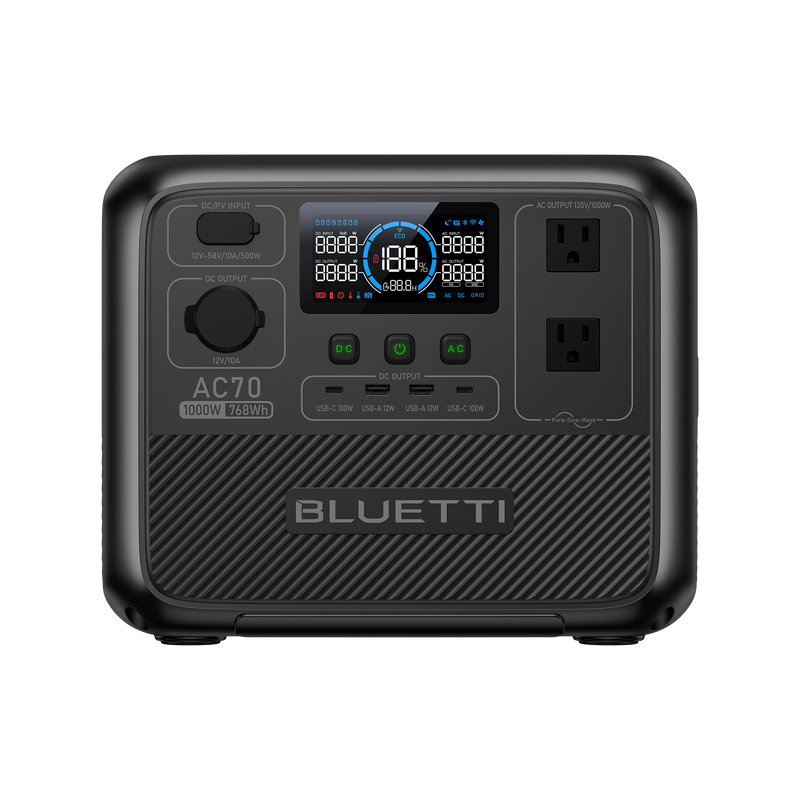Floods are among the most dangerous natural disasters, affecting millions of people worldwide each year. Floods can severely disrupt human lives, damage infrastructure, and cause lasting environmental changes.
Successful readiness and defensive strategies for floods require understanding their different types. The following discussion will examine different flood types, origin causes, and historical occurrences while introducing modern portable power stations as solutions during flooding emergencies.
Overview of Common Flood Types
Floods are categorized based on their origin, behavior, and affected regions. Below are six common types of floods and their characteristics.
1. River Floods

A river flood occurs when water overflows riverbanks, flooding nearby areas. This can be caused by:
- The floods of tropical storms occur when hurricanes or cyclones generate heavy rainfall.
- Prolonged thunderstorms: Continuous rainfall over several days.
- The fusion of snow dissolution and rainfall creates this type of flooding.
- Natural obstructions of ice create blockages that force water to accumulate and flood downstream areas.
Historical Examples:
- 1993 Mississippi River Flood: Prolonged heavy rainfall and snowmelt led to extensive flooding across nine states, causing significant damage. weather.gov
Impact on Communities: River overflows cause complete evacuation of neighborhoods while wiping out farmland and preventing people from reaching their destinations. The 1993 Mississippi floods resulted in industrial area devastation from river overtopping that produced extensive supply chain disturbances across the globe.
Role of Portable Power Stations: Portable power stations, such as the BLUETTI AC180, enable critical equipment operation through their use of communication devices, emergency lighting, and medical equipment, which ensures safety continuity in impacted areas during river floods. The devices prove especially important for power availability in areas that lack proper power infrastructure in communities located in remote or rural zones.
2. Coastal Floods

High tides supplemented by rainfall and blowing winds produce coastal flooding during high tide surges. Floods frequently occur at locations below sea level that lie nearest to the coast.
Historical Examples:
- 2015 Charleston Flood: A "1,000-year" rainfall event led to catastrophic flooding in Charleston, South Carolina, causing extensive damage.
- 2017 Hurricane Harvey: The hurricane brought unprecedented rainfall to Houston, Texas, resulting in catastrophic flooding and economic losses. nhc.noaa.gov
Impact: Seawater encroachment from coastal floods makes water unusable for agriculture and freshwater distribution systems. Such water events destroy coastal areas by wearing coastal features, which endangers the survival of ecosystems alongside human communities living in affected areas.
Preventive Measures: Strategic planning that includes seawall construction and wetland restoration, as well as flooding regulations for construction areas, assists in coping with coastal floods.
3. Storm Surges

Storm surges create dangerous elevation increases in sea levels that develop during the strongest wind systems, such as hurricanes and cyclones. Surge waves increase high tide levels, which results in catastrophic flooding situations.
Historical Examples:
- Hurricane Katrina (2005): The storm surge breached levees in New Orleans, causing widespread flooding and loss of life.
- Hurricane Sandy (2012): The hurricane's storm surge led to extensive flooding in parts of New York and New Jersey, causing significant damage.
Preparedness: Minimal impact of storm surges can be achieved through the combination of early warning systems and strong infrastructure. The Netherlands minimized its flood exposure by developing modern flood protection systems, such as storm surge barriers along its flood-prone lowland areas.
4. Inland Floods

Inland floods develop in locations farther inland than coastal areas through a combination of the following factors:
- Soaked ground tends to overflow because of steady rainfall.
- Extremely heavy short-term precipitation creates an overflow of drainage facilities.
- River blockages: Debris or ice obstructs river flow.
- Water floods the environment because structural failure dislodges great amounts of trapped water in dams.
Historical Examples:
- Hurricane Floyd (1999): The hurricane caused severe flooding in the eastern United States, leading to extensive property damage and displacement.
- 2023 California Atmospheric River Floods: A series of atmospheric river events brought heavy rainfall to California, resulting in widespread flooding.
Impact on Agriculture: Inland floods destroy entire agricultural sites when they flood farming areas and kill livestock while destroying food crops. The 2019 floods in the Midwest region of the U.S. inflicted 12.5 billion dollars of damages to agricultural assets.
5. Urban Floods

Water pooling that affects urban areas is identified as one type of flood event when urban drainage systems operate below their optimum capacity. When heavy rainfall exceeds drainage capacities, it causes street and building waterlogging throughout the area.
Causes:
- Concrete and asphalt substrates create waterlogging because they stop water penetration into the soil.
- The outdated drainage systems fail to handle higher amounts of rainfall that occur during storms.
Historical Examples:
- 2021 Zhengzhou Flood: Unprecedented rainfall led to severe urban flooding in Zhengzhou, China, causing significant casualties and damage.
- 2022 St. Louis Urban Flood: Sudden heavy rainfall overwhelmed the city's drainage infrastructure, leading to widespread flooding.
Preventive Measures:
● Improved urban planning and drainage systems.
● Rain gardens and permeable pavements, together with other environmental features, make up the green infrastructure.
Role of Portable Power Stations: The BLUETTI AC70 portable power station empowers critical emergency rescue devices with its power capabilities while facilitating communication between rescue workers during an urban flood emergency.
6. Flash Floods

A flash flood develops swiftly and intensively following heavy rainfalls, which happen either within minutes or proceed within hours without warning. The speed of their development combined with their heavy destructive power makes these incidents extremely dangerous.
Historical Examples:
- 2013 Colorado Flash Floods: Extended periods of heavy rain resulted in flash floods across Colorado, causing significant destruction.
Risk Factors:
- Wildfires transform soil into a material that cannot properly absorb water, thus creating additional flash flood risks in the affected areas.
- The increased slope of the land quickens water movement, which heightens the danger.
Safety Tips: The shortest distance between safety and disaster is staying away from floodwaters because six inches of moving water can easily dislodge a person.
Concise Table for Flood types and Causes, along with their historical examples
| Flood Type | Causes | Historical Examples | Impact |
| River Floods | Heavy rainfall, snowmelt, ice jams | 1993 Mississippi River Flood | Widespread flooding, billions in damages, displacement of communities |
| Coastal Floods | High tides, storm surges, heavy rainfall | 2015 Charleston Flood, 2017 Hurricane Harvey | Infrastructure damage, economic losses, large-scale evacuations |
| Storm Surges | Hurricanes, cyclones | Hurricane Katrina (2005), Hurricane Sandy (2012) | Coastal flooding, destruction of homes, severe economic impact |
| Inland Floods | Prolonged rainfall, dam failures, river blockages | Hurricane Floyd (1999), 2023 California Atmospheric River Floods | Damage to homes, road closures, power outages |
| Urban Floods | Heavy rainfall, poor drainage systems | 2021 Zhengzhou Flood, 2022 St. Louis Urban Flood | Citywide flooding, transport disruptions, property loss |
| Flash Floods | Intense rainfall, dam failures | 2013 Colorado Flash Floods | Sudden, high-impact floods, loss of life, infrastructure collapse |
Flood Monitoring and Early Warning Systems
The expansion of flood monitoring and early warning systems is critical in lessening flood-caused damage. CI-FLOW operates as Coastal and Inland Flood Observation and Warning by integrating real-time data about rivers with rainfall information and tidal measurements for precise flood predictions.
Key Features of CI-FLOW:
- Real-time monitoring of water levels.
- Predictive modeling for flood-prone areas.
- Public alerts and safety protocols.
Importance: Safety and lower property destruction become possible through early warning systems since they provide enough time for evacuation procedures and resource distribution. The 2019 Mississippi River floods proved that timely alerts permitted population centers to create prevention plans before damage occurred.
Application of Portable Power Stations During Floods
Portable power stations are indispensable survival equipment for dealing with flood-related emergencies. The devices offer dependable power distribution in all situations lacking a standard power supply.
Use Cases:
- Power stations at temporary shelters enable users to run light heaters alongside communication equipment.
- Rescue Operations: Running small appliances and medical equipment.
- Emergency Lighting: Ensuring visibility during nighttime operations.
Recommended Products:
BLUETTI AC180: The portable power station from BLUETTI AC180 serves critical equipment well during flood conditions due to its large capacity and diverse output possibilities.
BLUETTI AC70: As a compact model, BLUETTI AC70 operates efficiently to meet both small emergencies and portable needs.
Community Preparedness and Education: A Key to Flood Resilience Community
Preparedness and education are equally important to flood management, although infrastructure and technology remain crucial. A community with detailed knowledge about and proper readiness against floods greatly diminishes the effects of floods.
Why community preparedness matters:
- A community with sufficient education will react swiftly to initial warning signals, thus protecting both people and buildings.
- The allocation of resources becomes more effective when local knowledge guides how to distribute resources to vulnerable areas, including elderly residents and neighborhoods that tend to flood.
- The community follows behavioral guidelines since preparedness activities create awareness about preventing contact with floodwaters while property owners establish emergency readiness plans and protect their assets.
Major elements in flood readiness plans include:
- Residents need public awareness programs about flood danger indicators and evacuation protocols.
- Emergency Drills Include Regulated Flood Simulations that Keep All Personnel Informed About Their Emergency Functions.
- Creating local assistance networks allows vulnerable people to obtain support during flooding events.
Flood preparedness programs based in communities throughout Bangladesh effectively lowered death tolls that occur when monsoon season arrives. The trained villagers learn to construct elevated shelters, maintain emergency goods, and develop effective usage of warning systems.
Conclusion
Natural flood events remain complex because they generate their effects and multiple sources of origin. Portable power stations prove essential when handling river and flash floods due to each event's different challenges. The combination of flood analysis with current technology, including portable power stations and early warning systems, enables better fighting against these destructive natural disasters.
The purchase of reliable equipment for BLUETTI AC180 and AC70 during flood emergencies lets essential operations maintain continuous operation. Monitoring the situation, having preparedness plans, and prioritizing safety will help you successfully handle flood difficulties.








































































